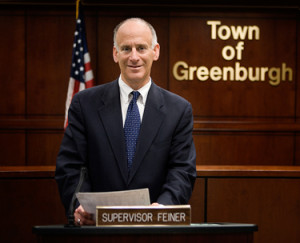Greenburgh appeals antenna court order
The town of Greenburgh is appealing a court order that says it must issue permits to install 20 cellphone antennas on utility poles in residential neighborhoods.
NextG Networks of NY Inc., a subsidiary of Crown Castle International Corp. of Houston, sued the town based on an application filed in November 2009 to install a “distributed antenna system” that would address service deadspots in the area. After an extended application and review process that the judge likened to pingpong, the Greenburgh Town Board finally rejected NextG”™s application in July 2012. By then, the company had already set a deadline and promised a lawsuit if the town didn”™t meet its date for a decision.
U.S. District Judge Cathy Seibel, in a July 3 ruling, said the town”™s reasoning for rejecting the applications was based partially on a misinterpretation of the law. Seibel also said she ordered the permits issued rather than send the matter back to the town based on its snail”™s pace in handling the application process.

Seibel in a 45-page ruling said “the bureaucratic hoops through which plaintiff was put, along with the rest of the record, suggest that the town would be no more interested in a prompt disposition now that it was beginning in 2009.”
There were 252 days from the start of the process to the formal rejection, well beyond what is presumed “reasonable” under federal “shot clock” statutes, the ruling stated. NextG”™s lawsuit outlined a process in which town agencies and officials weren”™t responsive to the telecommunications company”™s requests for documents or guidance.
When NextG first approached the town, 50 cellular antennas had already been installed in neighborhoods throughout the unincorporated town of Greenburgh. With the wireless boom, the federal government had approved packages of legislation that made installing antennas easier for companies. One piece of that legislation essentially said that communities could not dismiss applications based on the perceived, yet scientifically inconclusive impact of the antennas on public health.
Greenburgh approved its own antenna law several years ago, giving preference to installations in nonresidential areas. The law requires that a company prove installation will improve service for an area of the town that doesn”™t have any and the company must also show that the service can”™t be achieved by placing the antennas in nonresidential areas. The structures must also meet height and sizing requirements as set forth in the town code.
In the NextG case, Greenburgh contended that the system”™s control boxes would be too large, but the judge cited the town”™s own engineering report, which stated the boxes were no more intrusive than the already existing hardware of telephone, cable and other utility companies. Timothy Lewis, Greenburgh”™s town attorney, said that the size of the control boxes would be part of the appeal.
“The box that Crown is suggesting is bigger than we would like it to be,” Lewis said. “The issue would be does the federal law supersede the town”™s local law?”
Lewis said the town was not satisfied that a coverage gap existed for MetroPCS, the mobile phone network said to be NextG”™s client and the beneficiary of the increased reception in the area. NextG said its client list was irrelevant and its installations could be modified in the future to include other cell service providers.
Alternative locations had been discussed and pushed by members of the public during public hearings, but those were not a focus of the court ruling. Rather, the judge”™s ruling addressed the red tape that the applicant was made to cut through.
NextG”™s applications were called deficient after the company met several times with town officials and addressed Greenburgh”™s Antenna Review Board. The town”™s Conservation Advisory Council also took up the issue and advised elected officials on the applications. The Town Board hired a special counsel for the case after the process grew lengthier and litigation became increasingly inevitable.
Town Supervisor Paul Feiner, a Democrat, said after the town board”™s unanimous rejection of the antennas last year that he would welcome a resubmitted application so long as it proved that other, nonresidential locations wouldn”™t be better suited for the antennas. “Our goal: to preserve the suburban character, aesthetics and property values,” he said. “We have tried to place antennas in nonresidential areas, if at all possible.”
Last week, Greenburgh officials approved paying as much as $50,000 to its outside legal counsel in the appeal, Pennsylvania-based Unruh Turner Burke & Frees. The firm, which already was paid $205,000 prior to the appeal, knocked down its regular hourly rate from $350 to $225 for any work after July, according to town documents.
Feiner had reached out to several groups, including the Association of Towns of the State of New York, seeking to team up with other municipalities or groups that might have similar litigation with telecommunications companies. Feiner hoped to accumulate strength in numbers and perhaps defray some of the cost of the appeal, but there were no takers.
Lewis, the town attorney, said the town would have had to wait until November for the association to determine whether or not to get involved with the appeal. Due to an urgency in filing the appeal with the U.S. Court of Appeals Second Circuit, the town decided to go at it alone, Lewis said.
While the appeal proceeds, the town also is seeking a stay of the federal judge”™s order to issue the antenna permits. If Seibel rejects the town”™s”™ request, Greenburgh could appeal for a stay from the federal Court of Appeals.
NextG”™s parent company, Crown Castle, did not respond to requests for comment.